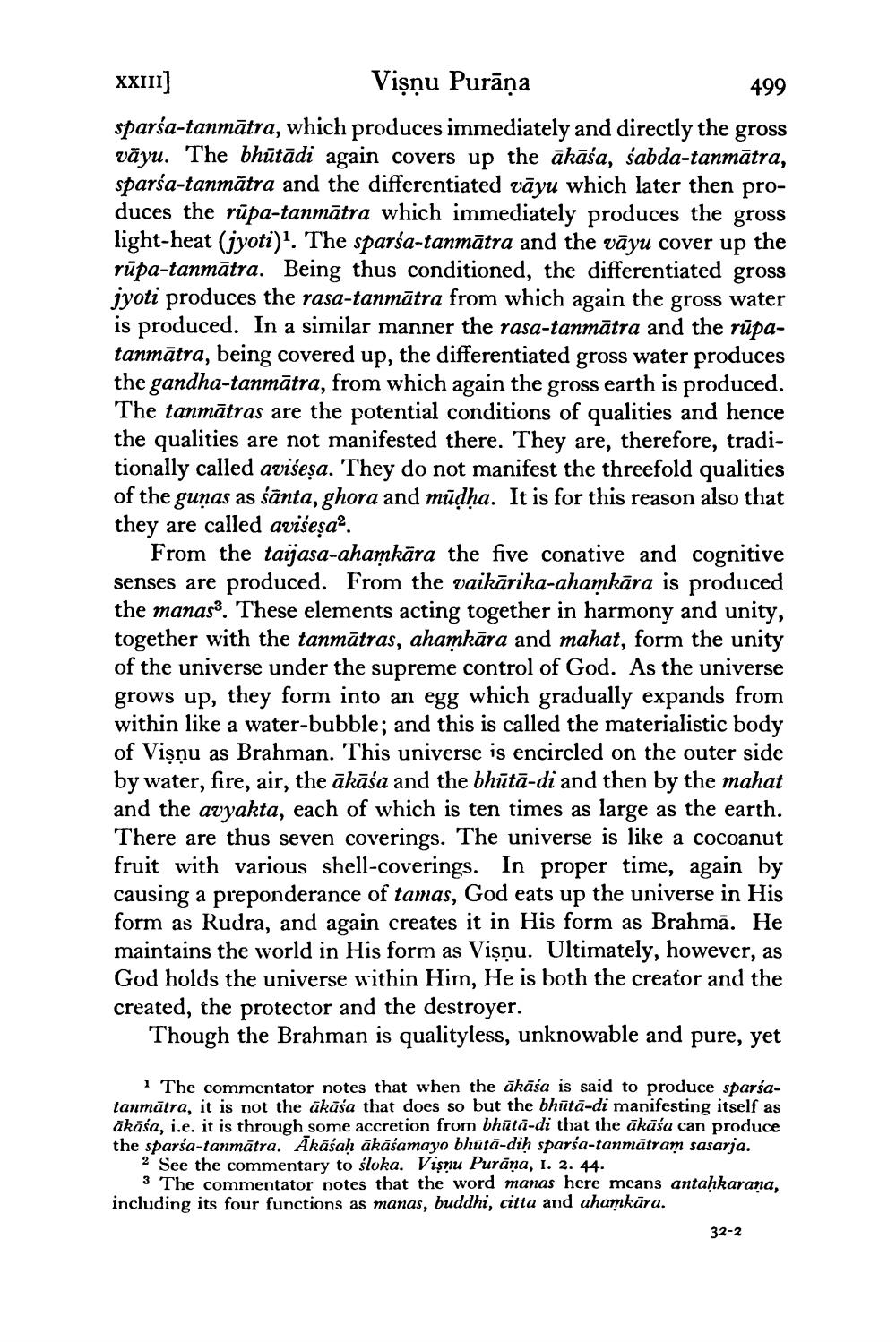________________
xxii] Vişņu Purāņa
499 sparśa-tanmātra, which produces immediately and directly the gross vāyu. The bhūtādi again covers up the ākāśa, sabda-tanmātra, sparsa-tanmātra and the differentiated vāyu which later then produces the rūpa-tanmātra which immediately produces the gross light-heat (jyoti)". The sparsa-tanmātra and the vāyu cover up the rūpa-tanmātra. Being thus conditioned, the differentiated gross jyoti produces the rasa-tanmātra from which again the gross water is produced. In a similar manner the rasa-tanmātra and the rūpatanmātra, being covered up, the differentiated gross water produces the gandha-tanmātra, from which again the gross earth is produced. The tanmātras are the potential conditions of qualities and hence the qualities are not manifested there. They are, therefore, traditionally called aviseșa. They do not manifest the threefold qualities of the gunas as śānta, ghora and mūdha. It is for this reason also that they are called aviseșa.
From the taijasa-ahamkāra the five conative and cognitive senses are produced. From the vaikārika-ahamkāra is produced the manas. These elements acting together in harmony and unity, together with the tanmātras, ahamkāra and mahat, form the unity of the universe under the supreme control of God. As the universe grows up, they form into an egg which gradually expands from within like a water-bubble; and this is called the materialistic body of Visnu as Brahman. This universe is encircled on the outer side by water, fire, air, the ākāśa and the bhūtā-di and then by the mahat and the avyakta, each of which is ten times as large as the earth. There are thus seven coverings. The universe is like a cocoanut fruit with various shell-coverings. In proper time, again by causing a preponderance of tamas, God eats up the universe in His form as Rudra, and again creates it in His form as Brahmā. He maintains the world in His form as Vişnu. Ultimately, however, as God holds the universe within Him, He is both the creator and the created, the protector and the destroyer.
Though the Brahman is qualityless, unknowable and pure, yet
1 The commentator notes that when the ākāśa is said to produce sparsatanmātra, it is not the ākāśa that does so but the bhūtā-di manifesting itself as ākāśa, i.e. it is through some accretion from bhūtā-di that the ākāśa can produce the sparsa-tanmātra. Akāśah ākāśamayo bhūtā-dih sparsa-tanmātram sasarja.
2 See the commentary to śloka. Vişnu Purāna, I. 2. 44.
3 The commentator notes that the word manas here means antahkarana, including its four functions as manas, buddhi, citta and ahamkāra.
32-2




